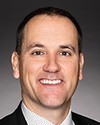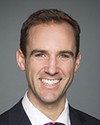Good afternoon.
First I want to remind everybody that today is Census Day. We're all very happy at StatsCan today. I want to remind everybody to check your mailboxes. I also want to thank you for the opportunity to present to the Special Committee on Pay Equity. Our presentation today contains data and analysis from Statistics Canada related to the gender pay gap that may inform your discussions.
The fact that men continue to earn more than women is not new. The first objective of today's presentation is not to provide a single definitive estimate of the pay gap but rather to describe the different measures that are commonly used to describe gender pay differences and to demonstrate that measurement and methodology matter. The second goal is to demonstrate how the Canadian gender pay gap has changed over time.
The most widely cited statistics on the gender pay gap are based on annual earnings. Women working full year, full time, earn 74¢ for every dollar earned by men. An alternative measure is based on hourly wages. Women earn on average about 86¢ for every dollar earned by men. Why is there such a large difference in these ratios?
One caveat with the earnings ratio is that it does not accurately account for differences in work volume. In 2015 men working full time worked about 3.3 hours longer than women working full time, so in principle there could be no gender gap in hourly wages while there was one in annual earnings simply because men work more hours than women do.
Another caveat regarding the earnings ratio is that it excludes a large and changing segment of the population. In 2013, roughly 68% of women and 75% of men worked full year, full time. Ratios based on hourly wages overcome these problems and have the added advantage of being job-specific, thereby facilitating comparisons between the wages of men and women.
Slide 3 looks just at the trend since the 1980s in these two gender-based ratios: one using annual earnings, which is the one on the bottom, the solid line, of full-time, full-year workers; and the other using an hourly wage rate of full-time workers. Between 1984 and 1992, the annual earnings ratio increased by 7.5%. After 1992, the series for the annual earnings remained relatively stagnant. This differs from the hourly wage ratio, which increased moderately throughout the period.
When they're trying to describe the gender wage gap, researchers also look at the attributes men and women bring into the workplace. In 2012 men had roughly three years' more work experience than women did. This difference is accounted for by work interruptions, by any restriction in the number of hours worked per week, or by the number of weeks worked per year. Difference in experience, coupled with the fact that wages increase with work experience, accounts for about 11% of the gender pay gap.
It is a well-known fact that educational attainment of both men and women has been rising, but there have been persistent differences between the fields of study chosen by men and women. Since wages differ by field of study, the choice of discipline accounts for about 4% of the overall gender pay gap.
The types of workplace to which men and women belong also differ. The characteristics of the workplace account for more of the gender pay gap than do differences in work characteristics, such as education and experience. Women are concentrated in low-wage workplaces. The results show that women earn about 15% less than men do when the workplace is not taken into account, compared to 8% less when workplace controls were included.
When the wage ratio is adjusted for differences in the observable characteristics of men and women and the workplaces to which they belong, women earn on average over 90¢ for every dollar earned by men.
Despite the long list of factors used in the various studies, a portion of the gender wage pay gap cannot be explained.
There are numerous other factors not accounted for that may contribute to our understanding of the gender pay differences. Take, for example, pre-labour market experiences. Personal choices, expectations of family and friends, or the education system may influence the level of educational attainment, the choice of field of study, whether to participate in the labour force, job selection, work habits, and career progression. Differences in any of these factors can manifest themselves in different labour market behaviours and ultimately in different labour market outcomes, namely wages.
Going to the next slide, and again trying to explain why the gender wage gap narrowed between 1988 and 2008, we see that between 1988 and 2008, women's real wages increased by 12%, with increases occurring in all age groups and at all points across the wage distribution, but the dramatic change occurred among older workers and those at the higher end of the wage distribution. In contrast, the real wages of men increased by 1.3%. Losses were incurred among men in some age groups and at the lower end of the wage distribution.
While women make up half the paid workforce in Canada, it is their changing relative position that matters for wages. Three trends were noted.
One is education. The proportion of women in the labour force with a university degree has nearly doubled from the early 1990s and now surpasses that of men. Most university degrees are now granted to women. The wage gap among the university-educated remained at 16% due to persistent gender differences in the major field of study. Women outnumber men in social sciences and health, while men outnumber women in mathematics and engineering.
Looking at job tenure, we see that there has been an increase in the average job tenure among women, so that there is no longer a difference when compared to men. Also, women used to be much more likely to be in a job that had just started, with a tenure time of less than three months in the 1990s. That is no longer the case.
Finally, structural changes in the Canadian economy help explain why the wage ratio narrowed between 1988 and 2008. The shift away from manufacturing jobs and a decline in unionization had a disproportionately larger impact on men's wages. Women increased their representation in high-wage occupations, such as senior management positions, throughout the period. However, the wage gap in these occupations continued to be larger than the average. This is not surprising, since increasing representation is first apparent at the lower entry-level positions within these high-wage occupations.
Other Canadian research has shown that women continue to choose a more narrow range of occupations than men and that women still represent a large portion of workers employed in the 20 poorest-paid occupations. Female-dominated occupations, such as health and education, had relatively small initial pay gaps at the beginning of this period and changed very little over time. These changes in marketable characteristics accounted for about 60% of the narrowing of the wage gap between 1988 and 2008.
Going to slide 7, I'll turn to examining the changing relationship between gender wage gap and age.
In any given year, wage gaps are larger among older workers than younger workers. For example, in 2008 the wage gap was 19.3% among those aged 50 to 54, versus 9.9% among those aged 25 to 29. Also, in year-to-year differences, wage gaps in all age groups are becoming smaller. Among persons aged 35 to 39 the wage gap was 23.2% in 1988, whereas it had shrunk to 16.3% in 2008.
In following a birth cohort over time, there is little evidence of a widening of the wage gap as workers age. For example, in 1988 the wage gap was 20.6% among those aged 30 to 34. By 2008, when this group was aged 50 to 54, the wage gap for this cohort was 19.3%, which is not much of a change.
Generally, the wage gap early in their career is a good indicator of the gap throughout a generation's working life.











